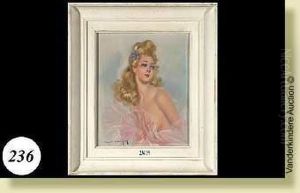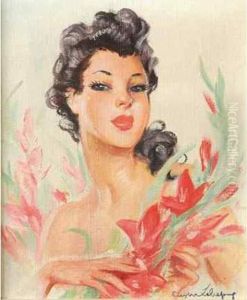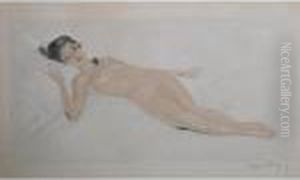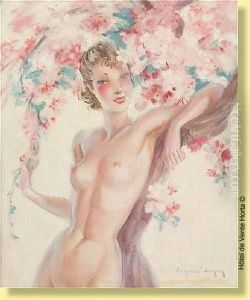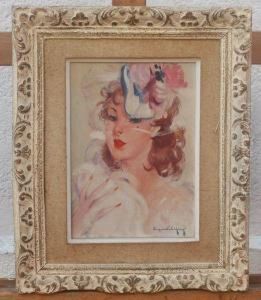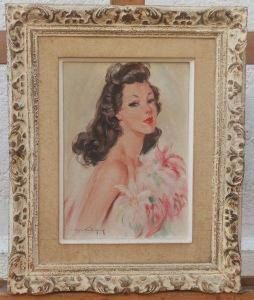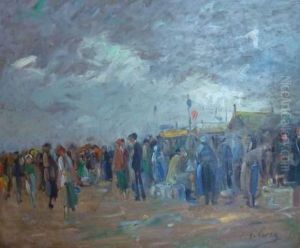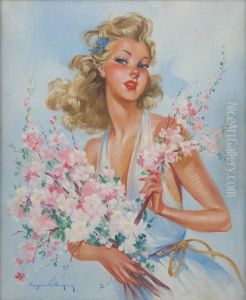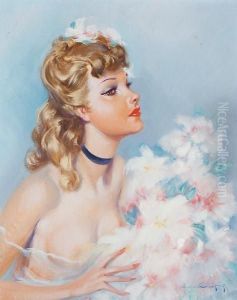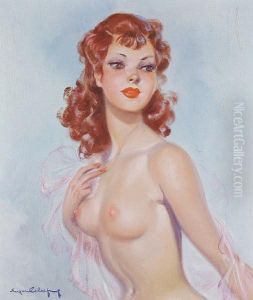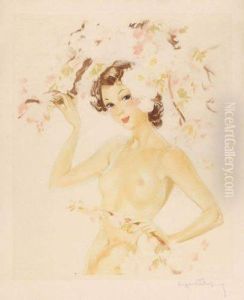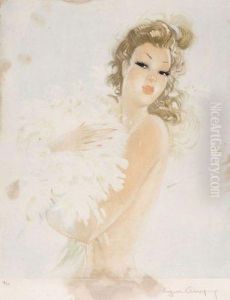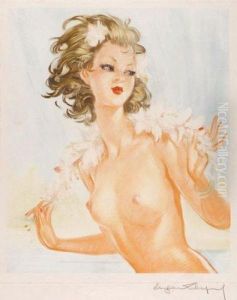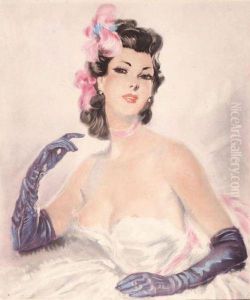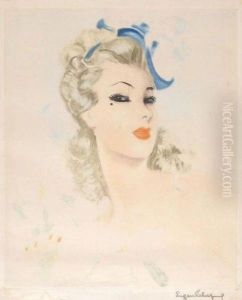Eugene Lelievre Paintings
Eugène Lelièvre was a French artist known for his contributions to the fields of illustration, poster art, and graphic design. Born in 1876, Lelièvre's career spanned the turn of the 20th century, a period marked by significant changes in art and society. His work reflects the vibrant and dynamic spirit of the Belle Époque era in France, a time when arts and culture flourished amidst technological advancements and social transformation.
Lelièvre's artistic talents were evident from an early age, and he pursued formal training at prestigious institutions. His education equipped him with a solid foundation in traditional art techniques, which he skillfully combined with emerging styles of his time. Lelièvre was particularly influenced by Art Nouveau, a movement characterized by its use of organic forms, flowing lines, and incorporation of modern life's vibrancy into art.
Throughout his career, Lelièvre contributed to various artistic domains. He was prolific in creating illustrations for magazines, books, and newspapers, capturing the essence of contemporary life with a keen eye for detail and a distinctive style. Additionally, Lelièvre made significant contributions to the world of poster art, a medium that gained immense popularity during his lifetime as a tool for advertising and public communication. His posters, often created for events, products, or entertainment venues, were celebrated for their bold use of color, innovative compositions, and ability to convey messages effectively.
Lelièvre also engaged in graphic design, applying his artistic skills to the burgeoning field of visual communication. His work in this area showcased his versatility and adaptability, embracing new technologies and mediums to reach wider audiences.
Despite his accomplishments, Eugène Lelièvre remains a somewhat lesser-known figure in the pantheon of French artists. His contributions, however, continue to be appreciated by art historians and collectors who recognize his role in shaping the visual culture of his time. Lelièvre's legacy is that of an artist who embraced the changing world around him, using his talents to reflect the beauty, complexity, and dynamism of early 20th-century life.
Eugène Lelièvre passed away in 1945, leaving behind a body of work that continues to inspire admiration and study for its artistic merit and historical significance.
